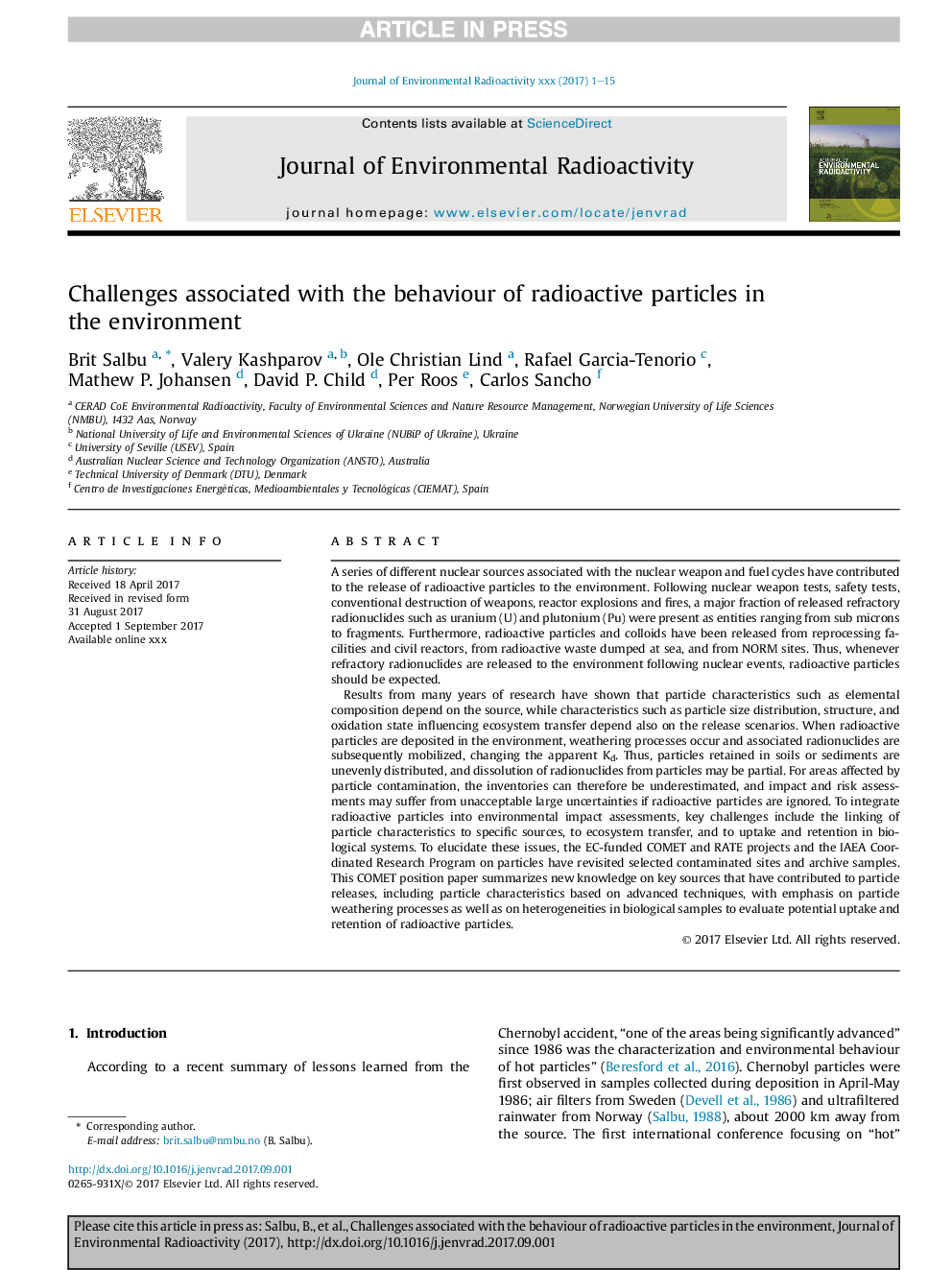| Article ID | Journal | Published Year | Pages | File Type |
|---|---|---|---|---|
| 8080655 | Journal of Environmental Radioactivity | 2018 | 15 Pages |
Abstract
Results from many years of research have shown that particle characteristics such as elemental composition depend on the source, while characteristics such as particle size distribution, structure, and oxidation state influencing ecosystem transfer depend also on the release scenarios. When radioactive particles are deposited in the environment, weathering processes occur and associated radionuclides are subsequently mobilized, changing the apparent Kd. Thus, particles retained in soils or sediments are unevenly distributed, and dissolution of radionuclides from particles may be partial. For areas affected by particle contamination, the inventories can therefore be underestimated, and impact and risk assessments may suffer from unacceptable large uncertainties if radioactive particles are ignored. To integrate radioactive particles into environmental impact assessments, key challenges include the linking of particle characteristics to specific sources, to ecosystem transfer, and to uptake and retention in biological systems. To elucidate these issues, the EC-funded COMET and RATE projects and the IAEA Coordinated Research Program on particles have revisited selected contaminated sites and archive samples. This COMET position paper summarizes new knowledge on key sources that have contributed to particle releases, including particle characteristics based on advanced techniques, with emphasis on particle weathering processes as well as on heterogeneities in biological samples to evaluate potential uptake and retention of radioactive particles.
Related Topics
Physical Sciences and Engineering
Energy
Nuclear Energy and Engineering
Authors
Brit Salbu, Valery Kashparov, Ole Christian Lind, Rafael Garcia-Tenorio, Mathew P. Johansen, David P. Child, Per Roos, Carlos Sancho,
